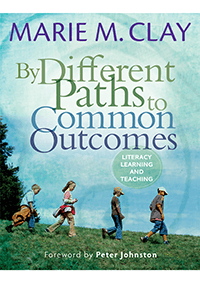
Record of Oral Language
Observing Changes in the Acquisition
Proficiency in oral language has long been considered important by teachers for self-expression and for communicating ideas. Children who are learning to speak English catch on to the rules by grasping first the early structures, then those of medium difficulty and, finally, those of greater difficulty.
Awareness of features which will allow a learner to master a wide range of structural knowledge about English sentences should help teachers develop more powerful language programmes.
Record of Oral Language describes a technique for recording and assessing change in children's oral language development. It was developed for research studies in young children. Experience has shown that Record of Oral Language helps practising teachers to observe and understand changes in young children's language. This book is directed towards teachers who wish to do this. It is appropriate for ESL.
The digital edition of this publication is intended for reference purposes only, we request that you have already purchased a print copy before ordering.
Only the print version of this text should be used with children.
|
NZD incl GST
|
Add to cart | |
| or more | each |


